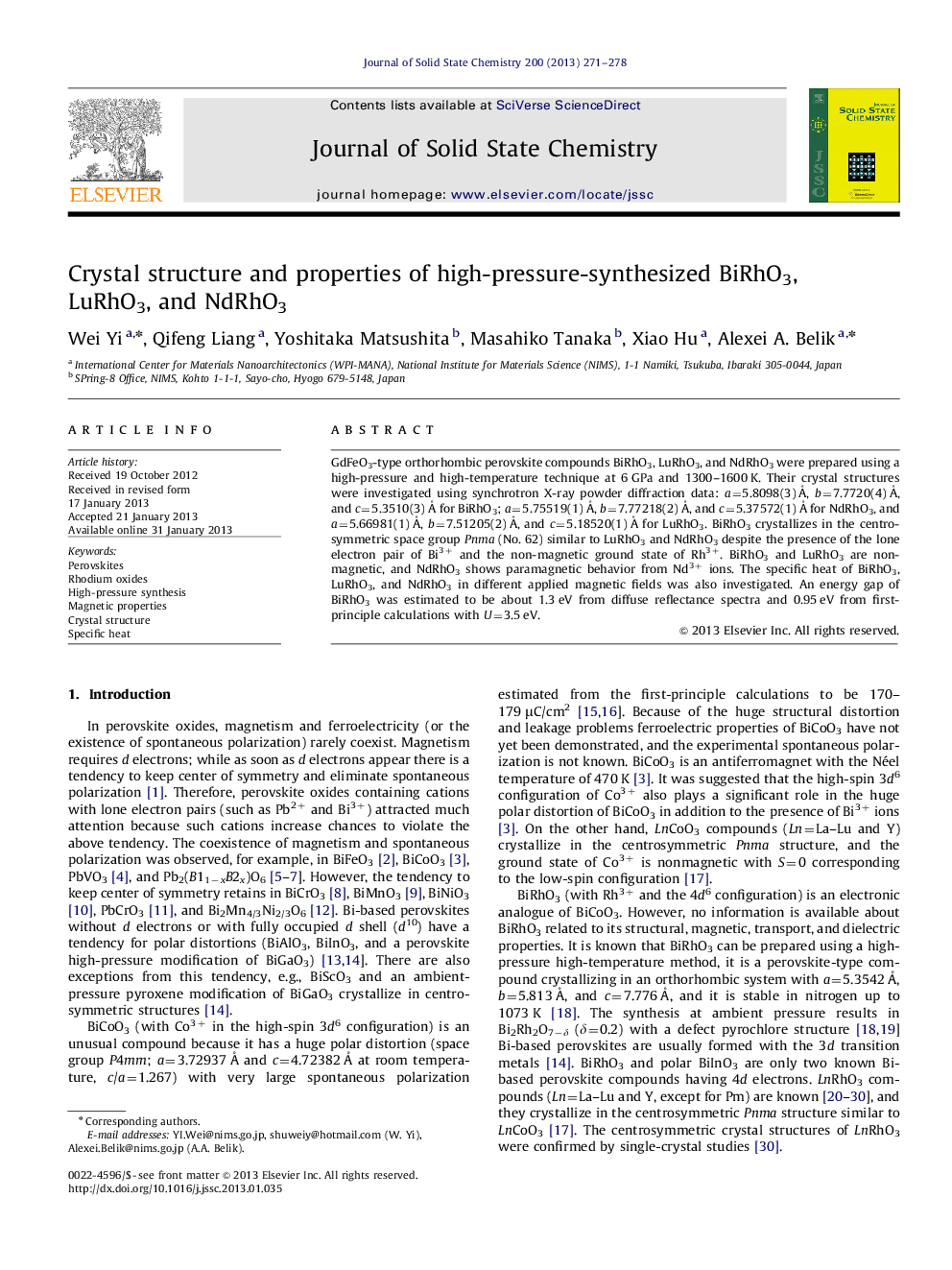| Article ID | Journal | Published Year | Pages | File Type |
|---|---|---|---|---|
| 1331221 | Journal of Solid State Chemistry | 2013 | 8 Pages |
GdFeO3-type orthorhombic perovskite compounds BiRhO3, LuRhO3, and NdRhO3 were prepared using a high-pressure and high-temperature technique at 6 GPa and 1300–1600 K. Their crystal structures were investigated using synchrotron X-ray powder diffraction data: a=5.8098(3) Å, b=7.7720(4) Å, and c=5.3510(3) Å for BiRhO3; a=5.75519(1) Å, b=7.77218(2) Å, and c=5.37572(1) Å for NdRhO3, and a=5.66981(1) Å, b=7.51205(2) Å, and c=5.18520(1) Å for LuRhO3. BiRhO3 crystallizes in the centrosymmetric space group Pnma (No. 62) similar to LuRhO3 and NdRhO3 despite the presence of the lone electron pair of Bi3+ and the non-magnetic ground state of Rh3+. BiRhO3 and LuRhO3 are non-magnetic, and NdRhO3 shows paramagnetic behavior from Nd3+ ions. The specific heat of BiRhO3, LuRhO3, and NdRhO3 in different applied magnetic fields was also investigated. An energy gap of BiRhO3 was estimated to be about 1.3 eV from diffuse reflectance spectra and 0.95 eV from first-principle calculations with U=3.5 eV.
Graphical abstractA fragment of the crystal structure of BiRhO3 in the Pnma (along b axis) model, 2×2×2 unit cell. The RhO6 octahedra are shown in gray. The Bi atoms are shown by big black circles.Figure optionsDownload full-size imageDownload as PowerPoint slideHighlights► BiRhO3, LuRhO3, and NdRhO3 were prepared using a high-pressure technique. ► Structure of three compounds was determined: centrosymmetric space group Pnma. ► BiRhO3 and LuRhO3 are non-magnetic, and NdRhO3 shows paramagnetic behavior. ► Specific heat of BiRhO3, LuRhO3, and NdRhO3 was investigated. ► BiRhO3 has an energy gap of about 1.3 eV.
